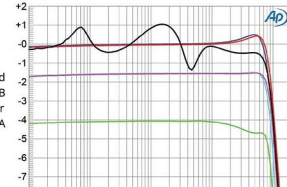
THIS ISSUE: Mikey conducts a zenith-error test and auditions Channel D’s latest Lino C phono preamplifier. Plus, a pretty and pretty effective record weight.
The stylus that cuts the grooves in your favorite records is best described, in simple terms, as “chisel-shaped.” The most accurate playback styli—the “extreme” ones that extract the maximum amount of information from the grooves—have a similar shape, with sharper and more severe contact edges than a standard elliptical stylus, itself an advance over spherical styli.
These extreme shapes, with names like Line Contact, Fine Line, Gyger, Replicant, Shibata, and van den Hul, have complex geometries with long, narrow vertical contact patches that sit deep within the groove, can better trace the deepest lateral modulation crevices, and beat the fastest, most efficient path up and down those modulation hills. I’ll refer to these, collectively, as line-contact styli (lowercase). The illustration below shows different stylus types and how they sit in the groove, from two angles.
Spherical styli, by comparison, sit high in the groove valley and are incapable of precisely tracing tight lateral modulations. They respond sluggishly to vertical modulations. Think of dragging (not rolling) a bowling ball up a hill: It ascends on one ball surface and, following a time-wasting handoff at the top, descends scraping a point on the ball’s opposite side. That short lag is a distortion and a significant responsetime loss.
An elliptical stylus’s handoff will be faster, but faster and more responsive still would be one of the extreme profiles with the narrowest width contact patches. The figure on the right shows a conical (spherical) stylus tracing a groove vertically; the figure compares lateral groove-tracing for line-contact and spherical styli.
Yet, despite all this microscopic evidence, the spherical stylus fans, with their romantic, Vaseline-on-the-lens notions of how music really sounds, appear online in force, commenting on every article like this one—even on AnalogPlanet, where I thought serious vinyl fanaticism ruled. That’s one of the virtues of this hobby: Whatever you like. Many just don’t want the hassles involved in correctly setting up an extreme-profile stylus because when it’s done wrong, it really sounds wrong.


Last month on AnalogPlanet,. The spherical stylus enthusiasts came out to play, claiming their balls get it all without having to worry about azimuth or SRA. They don’t know what they are missing, or they do but don’t care.




